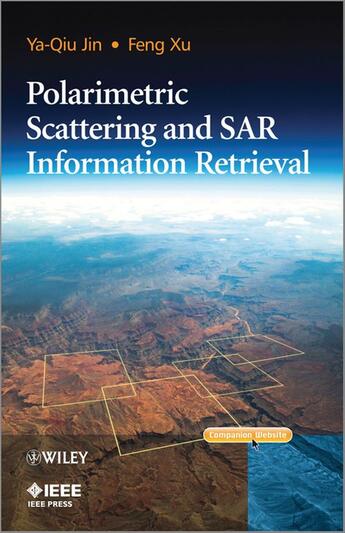-
Nombre de pages : (-)
-
Collection :
(-)
-
Genre :
(-)
-
Thème :
Non attribué
-
Prix littéraire(s) :
(-)
Résumé:
Taking an innovative look at Synthetic Aperture Radar (SAR), this practical reference fully covers new developments in SAR and its various methodologies and enables readers to interpret SAR imageryAn essential reference on polarimetric Synthetic Aperture Radar (SAR), this book uses scattering... Voir plus
Taking an innovative look at Synthetic Aperture Radar (SAR), this practical reference fully covers new developments in SAR and its various methodologies and enables readers to interpret SAR imageryAn essential reference on polarimetric Synthetic Aperture Radar (SAR), this book uses scattering theory and radiative transfer theory as a basis for its treatment of topics. It is organized to include theoretical scattering models and SAR data analysis techniques, and presents cutting-edge research on theoretical modelling of terrain surface. The book includes quantitative approaches for remote sensing, such as the analysis of the Mueller matrix solution of random media, mono-static and bistatic SAR image simulation. It also covers new parameters for unsupervised surface classification, DEM inversion, change detection from multi-temporal SAR images, reconstruction of building objects from multi-aspect SAR images, and polarimetric pulse echoes from multi-layering scatter media.Structured to encourage methodical learning, earlier chapters cover core material, whilst later sections involve more advanced new topics which are important for researchers. The final chapter completes the book as a reference by covering SAR interferometry, a core topic in the remote sensing community.Features theoretical scattering models and SAR data analysis techniquesExplains the simulation of SAR images for mono- and bi-static radars, covering both qualitative and quantitative information retrievalChapter topics include: theoretical scattering models; SAR data analysis and processing techniques; and theoretical quantitative simulation reconstruction and inversion techniquesStructured to enable both academic learning and independent study, laying down the foundations first of all before advancing to more complex topicsExperienced author team presents mathematical derivations and figures so that they are easy for readers to understand Pitched at graduate-level students in electrical engineering, physics, earth and space sciences, as well as researchersMATLAB code available for readers to run their own routinesAn invaluable reference for research scientists, engineers and scientists working on polarimetric SAR hardware and software, Application developers of SAR and polarimetric SAR, remote sensing specialists working with SAR data using ESA.
Donner votre avis















